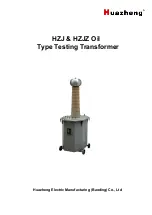
36
BE 57-660 Eclipse Model 700 Guided Wave Radar Transmitter
3.0
Reference Information
This section presents an overview of the operation of the
ECLIPSE Model 700 Guided Wave Radar Level
Transmitter, information on troubleshooting common prob-
lems, listings of agency approvals, lists of replacement and
recommended spare parts, and detailed physical, functional,
and performance specifications.
3.1
Transmitter Description
The ECLIPSE Model 700 is a loop-powered two-wire,
24 VDC, level transmitter based on the concept of Guided
Wave Radar.
3.2
Theory of Operation
3.2.1 Guided Wave Radar
Guided Wave Radar (GWR) combines Time Domain
Reflectometry (TDR), Equivalent Time Sampling (ETS)
and modern low power circuitry. This synthesis of technolo-
gies brings to the level market a high-speed radar circuit
(speed of light transmission). The electromagnetic pulses are
propagated via a waveguide that yields a system many times
more efficient than through-air radar.
3.2.2 Time Domain Reflectometry (TDR)
TDR uses pulses of electromagnetic (EM) energy to mea-
sure distances or levels. When a pulse reaches a dielectric
discontinuity (created by the surface of a process medium),
part of the energy is reflected. The larger the dielectric
discontinuity, the larger the amplitude (strength) of the
reflection.
Although TDR is relatively new to the industrial level mea-
surement industry, it has been used for decades in the tele-
phone, computer, and power transmission industries. In
these industries, TDR is used to successfully find wire or
cable breaks and shorts. An EM pulse is sent through the
wire, traveling unimpeded until it finds line damage due
to a break or short. A reflection is then returned from the
damaged area of the wire, enabling a timing circuit to
pinpoint the location.
A small amount of energy
continues down the probe
in a low dielectric fluid,
e.g. hydrocarbon
Air
ε
r = 1
Media
ε
r
> 1.4
A reflection is
developed off the
liquid surface
Transmit Pulse
24 VDC, 4-20 mA
Loop Powered
24 VDC, 4-20 mA
Loop Powered
Transmit
Pulse
Air
ε
r = 1
Media
ε
r > 1.4
A small amount of
energy continues
down the probe in a
low dielectric fluid,
e.g. hydrocarbon
A reflection
is devel-
oped off
the liquid
surface
















































